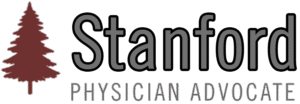Why has public trust in U.S. health agencies plummeted? Because conflicts of interest (COIs) have soared to unprecedented levels.
FDA: Industry-Funded Oversight?
At the Food and Drug Administration, skepticism over pharmaceutical influence dates back to the 1992 passage of the Prescription Drug User Fee Act (PDUFA), which allowed drugmakers to fund FDA reviews. What followed was a wave of financial entanglements—doctors involved in drug approval decisions with research grants, speaking fees, stock holdings, and past employment ties to pharma companies.
Even today, drug trials claiming overwhelming benefits—like those involving GLP-1 medications—are often funded by the very companies selling them. When financial incentives dominate research, can we really expect impartial conclusions?
A Pattern of Conflicted FDA Commissioners
Appointed in 2017, Dr. Scott Gottlieb brought with him a well-documented history of pharma ties. The New York Times reported that he had consulted extensively for major drug firms and earned millions in the process.
Yet Dr. Robert Califf, who served under both Presidents Obama and Biden, surpassed even that. “Many of us consult with the pharmaceutical industry,” he said in 2004. Califf’s financial links were vast, raising red flags about regulatory independence.
Even Dr. Margaret Hamburg, an earlier FDA commissioner, voiced concern about the shortage of non-conflicted experts—yet was later scrutinized for her own industry affiliations. Conflicts of Interest
The CDC Foundation: Private Dollars, Public Influence
Not many Americans know that the CDC Foundation, created by Congress in 1992, exists to attract corporate donations. Contributors include Bayer, 3M, Kaiser Permanente, and Wells Fargo. In 2018, lawmakers raised concerns about anonymous donors to both CDC and NIH foundations.
The issue became impossible to ignore in 2017 when Dr. Brenda Fitzgerald, newly appointed CDC Director, was revealed to have accepted $1 million from Coca-Cola while in Georgia public health leadership—creating a direct conflict with anti-obesity efforts.
She was forced to resign just six months later after purchasing tobacco stocks.
Revolving Doors and Lingering Doubts
Dr. Tom Frieden, her predecessor, publicly championed Tamiflu during an outbreak—while reportedly holding financial ties to the drug’s maker. And Dr. Julie Gerberding, before him, pivoted directly from heading CDC to leading Merck Vaccines in the same year she stepped down. Conflicts of Interest
Even Dr. Robert Redfield, who led the CDC through 2021, faced allegations of misrepresenting experimental data—yet another strike against public confidence in science-based governance.
Systemic Incentives for Conflict
The problem isn’t just individual—it’s institutional. There are three pharmaceutical lobbyists for every U.S. lawmaker, and over two-thirds of Congress accepted pharma campaign contributions in 2020. At the same time, leading medical journals increasingly publish industry-funded studies once viewed as suspect, while mainstream media gains heavily from pharma ad revenue.
This structural entanglement raises critical questions: If regulators, lawmakers, and researchers are all intertwined with Big Pharma, who’s truly safeguarding public health?
Call to Action
If we want to restore public trust in health institutions, we must demand transparency, accountability, and independence from industry influence.
➡️ Join the movement for ethical health policy and physician-led advocacy at StanfordPhysicianAdvocate.org
Read More from StanfordPhysicianAdvocate.org:
- Hidden Crisis in Health Care: How Corporate Greed is Undermining Patient Care
- The Financial Pressures Reshaping Physician Priorities
- Transforming Health Care Leadership: Prioritizing Care for Providers and Patients
- How a Coaching Culture Reduces Physician Burnout
- How Vaccine Hesitancy is Reviving Deadly Childhood Diseases
